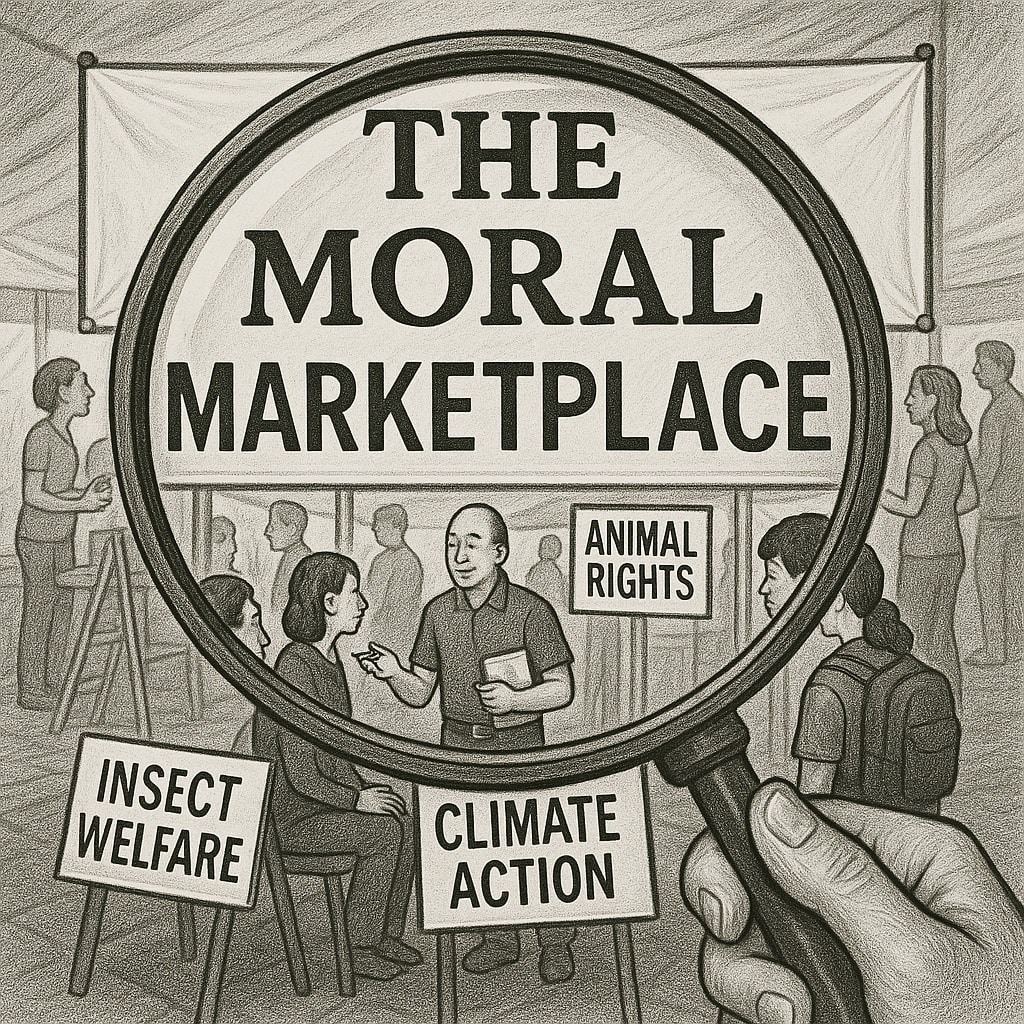
In my previous piece, I revised my original claim, ultimately arguing that even within an investment pool enriched by external interest, “effective giving” may nonetheless re-emerge as the dominant internal mechanism for some cause areas in the Effective Altruism space.
As of now, I have no significant reservations about that argument. I stand by it. As such, I intend to set aside the broader debate over whether Effective Altruism constitutes a moral marketplace and whether a resurgence of “effective giving” will re-emerge as its central mode of engagement. For now, that discussion feels, if not definitively settled, then at least sufficiently explored. But there’s just one thing.
I have a confession to make.
I have been treating certain features of Effective Altruism (its conceptual ambiguity, fragmented subgroups, internal competition, and absence of a unified vision) not as intrinsic to the movement, but as unintended and emergent flaws, born from a divergence from the movement’s goals.
I knew that Effective Altruism was not structured as a collaborative effort for solving global problems through unified action. But I also knew that effective altruism was aimed at finding the best and most effective ways to “do good”. That much was clear from the beginning. However, I assumed that the goal was to, at some point, reach a consensus on what the best way to “do good” was, and then for everyone to just, well, do it.
Fundamentally, I had assumed that Effective Altruists were engaged in a kind of collective endeavour aimed at identifying the most effective ways to allocate resources in the service of “doing good”. Implicit in this view was the belief that such a process would ultimately culminate in a kind of group consensus: that through rigorous debate, mutual engagement, and a shared commitment to evidence and reason, the movement would converge on the “right” answer.
Within that framework, the persistence of competitive dynamics without convergence on a definitive answer to how best to “do good” would appear to signal a kind of failure: a movement falling short of its aspirational goal to collectively determine the most effective course of action. This interpretation informed my earlier prediction that the movement would regress toward more traditional, donation-centric forms of engagement (a view I have since reconsidered).
However, the introduction of the moral marketplace metaphor has revealed that this assumption was likely misguided; what I once perceived as fragmentation may in fact be a constitutive feature of the system itself.
It now appears not merely possible, but probable, that Effective Altruism was never intended to function as a project aimed at collective consensus on the optimal way to “do good.” Rather, it seems increasingly plausible that the movement was either deliberately designed (or has naturally evolved) to operate exactly as a “moral marketplace”: a decentralised, quasi-competitive ecosystem in which autonomous actors compete for resources, influence, and moral attention. These actors are not bound by a commitment to ultimately agree on a singular vision of “doing good”, but only by a shared methodological allegiance to evidence and reason. Under this interpretation, the image of Effective Altruism paints less as a deliberative community and more as an ideological infrastructure for moral capitalism, in which causes succeed not through consensus but through strategic differentiation and market dynamics.
In this framework, the “most effective” ways to do good are not determined through deliberative agreement, but through the outcomes of market logic. Causes that attract the most attention, capital, and endorsement are, by the movement’s own logic, validated as high-impact. Their success is the metric.
From this angle, the consistent dominance of certain causes (and the marginalisation of others) is not a glitch. It’s the mechanism working as designed. If some areas thrive while others struggle at the margins, it may simply reflect distributed judgment: the result of many independently reasoned evaluations within a shared epistemic system. This is market logic applied to moral ambition.
Just as consumer demand elevates companies in traditional markets, moral attention elevates causes within Effective Altruism. The presence of factions and definitional ambiguity, previously seen as liabilities if unresolved, may actually be necessary features. They facilitate differentiation, enabling a quasi-market process through which the community organically “selects” which causes matter most. It’s not top-down prioritisation, it’s distributed, emergent endorsement.
If this interpretation holds, then what we are witnessing is not a deviation from Effective Altruism’s ideals, but rather their logical conclusion. The movement’s implicit answer to the question, “What is the most effective way to do good?” may not lie in consensus-building or collective solidarity, but in a model of competitive differentiation and selective survival. From this perspective, the marginalisation of niche cause areas, such as shrimp welfare, is not a failure of the system, but a reflection of its intended design.
If we accept that my initial assumption was incorrect (that effective altruism is not fundamentally a collaborative endeavour marked by collective deliberation, open dialogue, and cooperative experimentation among diverse yet aligned initiatives seeking the best ways to “do good”) and instead understand it as a highly competitive enterprise that organically yields a hierarchy of cause priorities through decentralised processes, then the existence of a moral marketplace is not merely compatible with this model; it is a necessary feature of it.
I think it is reasonable to conclude that my initial assumption was mistaken. The structure and artefacts within the effective altruism movement suggest that it was, from the outset, conceived as a kind of moral marketplace.
I have already argued that ideological diversity within the movement fosters competition, and that the shared commitment to operating within a methodological framework (centred on evidence and reason) functions as the unifying standard that binds these actors within a common domain. These structural features of the movement are not peripheral; they are the necessary preconditions for the very existence of a market.
If this is the case, then the moral marketplace at the heart of Effective Altruism is, in many ways, ingenious—mirroring the allocative efficiency of real-world markets.
I may have been wrong about effective giving’s inevitable resurgence. And I may have misunderstood Effective Altruism’s structural nature. But grappling with those misjudgements has yielded insight. The moral marketplace metaphor, born from flawed premises, offers a productive lens for understanding how the movement actually functions.
As a result, I’ve arrived at a more nuanced understanding of cause prioritisation. It’s no longer simply a matter of selecting causes that resonate with my moral intuitions; a broader set of considerations must come into play. I now recognise the importance of evaluating how a cause is positioned within the moral marketplace—how it might perform, where it stands in relation to others, and what strategic value it holds. For newcomers to effective altruism like myself, who may not yet fully grasp the complex market dynamics that shape the movement, the moral marketplace metaphor offers a clarifying lens. It reveals that prioritising causes is not a straightforward task, but one that demands thoughtful engagement with a range of strategic, epistemic, and ethical factors.
For now, I’m closing this chapter of the “Buying Good” thread. I like where it has landed. It was never intended as an empirical inquiry, but rather a theoretical one, and considerable theorising has indeed taken place. I may well return to these questions in the future. Undoubtably, the conversation will continue to unfold. But until then, onward.

